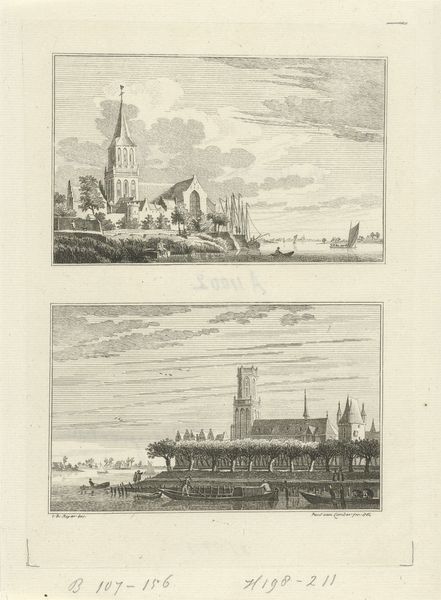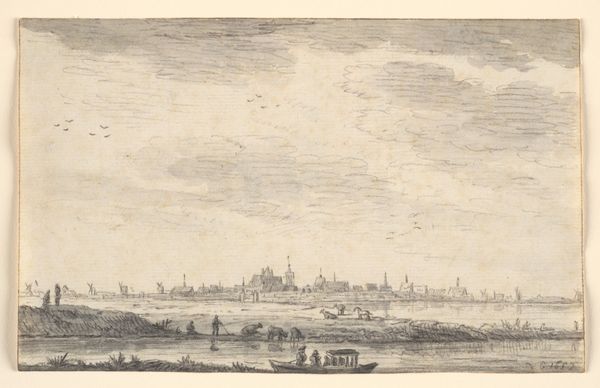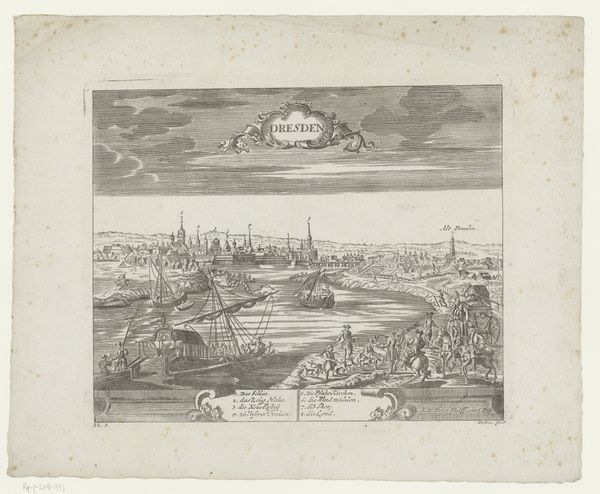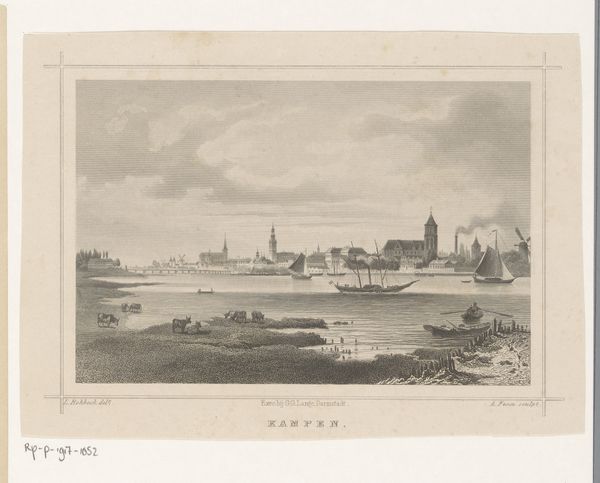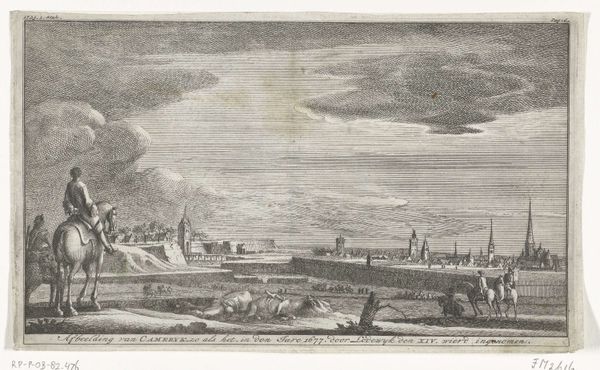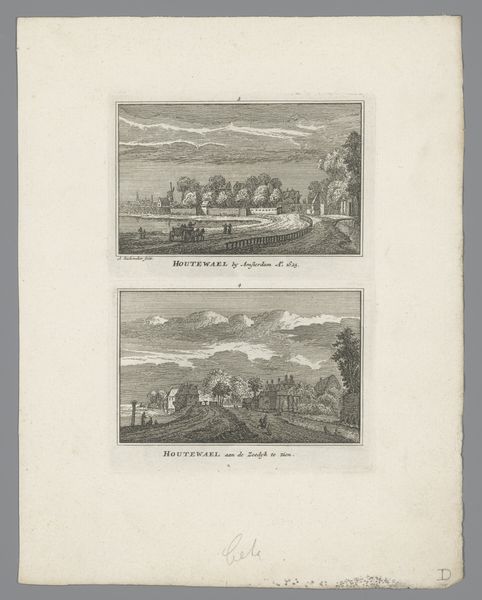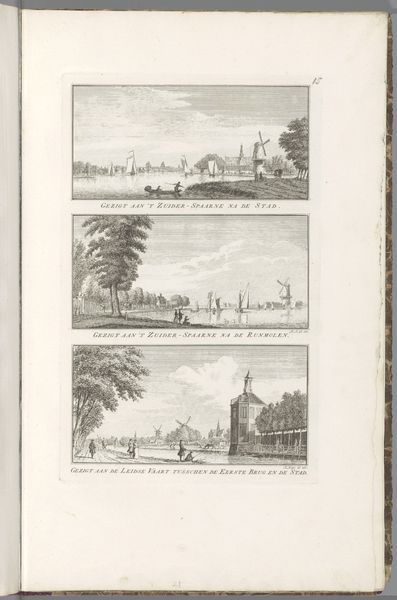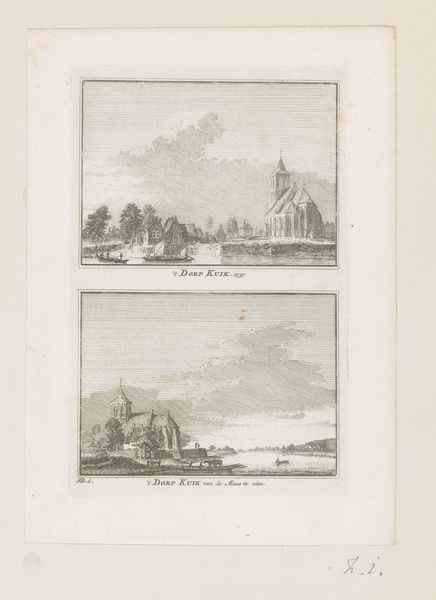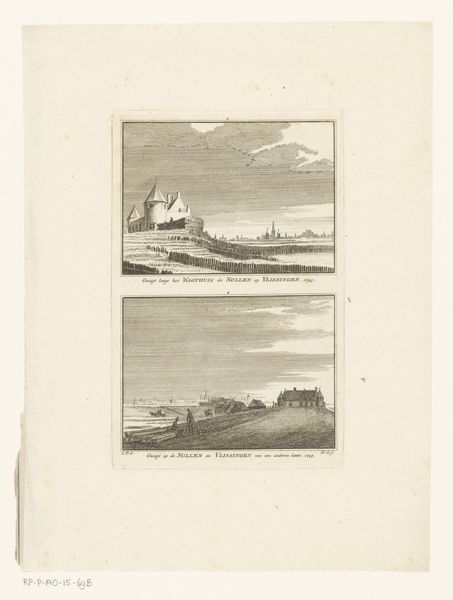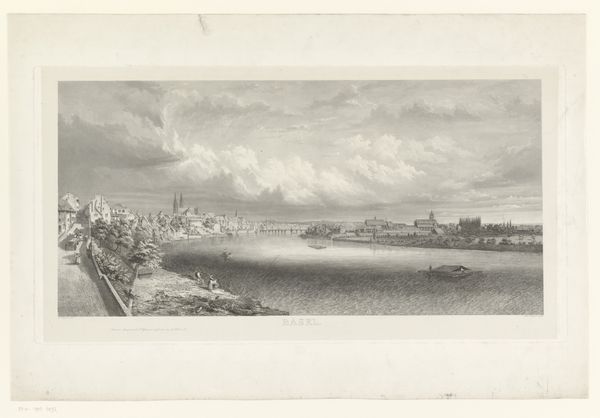
print, etching, engraving
#
baroque
#
dutch-golden-age
# print
#
etching
#
perspective
#
line
#
cityscape
#
engraving
Dimensions: height 141 mm, width 86 mm
Copyright: Rijks Museum: Open Domain
Curator: Here we have "Gezichten op de Derde en Vierde Haarlemmerpoort in Amsterdam," an etching and engraving attributed to an anonymous artist, dating back to 1723. It's currently housed here at the Rijksmuseum. Editor: My first impression is a feeling of somber reflection, like looking back on a chapter that's closed. The sharp, precise lines create an almost melancholic tone. Curator: It’s fascinating to consider the physical process here. Etching and engraving – painstaking techniques requiring immense skill. Each line meticulously carved to depict these cityscapes, embodying the labour that goes into portraying a city's development. Editor: Absolutely, but those lines aren’t just technical. They form iconic images – the imposing gate, the serene waters. It makes me wonder about the Haarlemmerpoort’s symbolic meaning to Amsterdam at that time. Gateways often represent transitions, protection. Curator: Exactly! The very act of depicting the "old" and "new" gates side-by-side speaks to Amsterdam's evolution, the shift in materials, building practices, and perhaps the very idea of what constitutes a "city." Editor: Note how water features in both images. Water is essential to Amsterdam and is a symbolic medium of passage. The small boats hint at the daily rituals connected to the gates – trade, travel, communication. It is how people lived, worked, and thrived. Curator: Consider the materiality again. The prints, endlessly reproducible, allowing wider society to partake in views that may have been inaccessible previously, thereby enabling a common shared visualization of their place within it all. Editor: That connects with the symbolism of the windmill, it invokes progress, new times! How did Amsterdam change from a closed town to an outward-looking, economically thriving center? It all has to do with symbols and how society evolves. Curator: The artist presents a historical material and conceptual comparison, showing how methods of making place were shifting during the Dutch Golden Age. It emphasizes accessibility of shared vision for broader integration of Dutch people with Amsterdam. Editor: The layering of historical imagery speaks to how urban environments carry accumulated stories within them. Curator: The interplay between craft, labor, and evolving cityscape makes this an exceptionally insightful depiction. Editor: For me, seeing those visual emblems invites reflection on the stories behind a place, and how the past continuously informs our present.
Comments
No comments
Be the first to comment and join the conversation on the ultimate creative platform.
